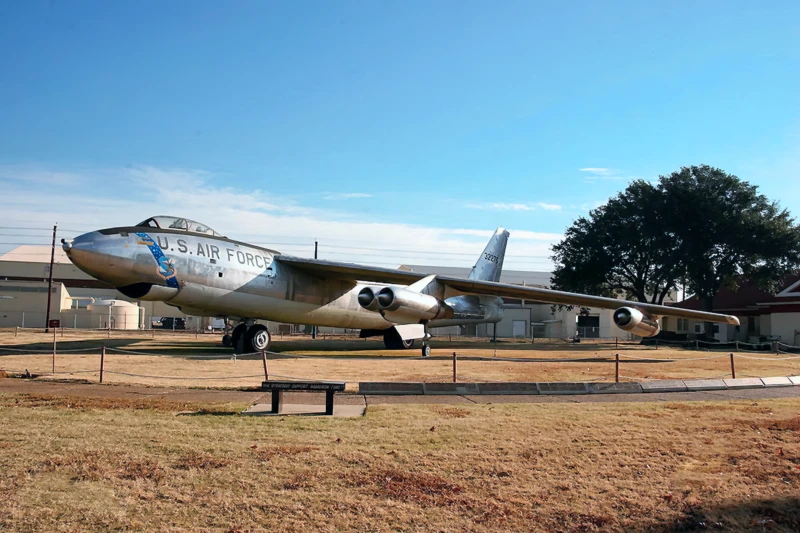
B-47 Stratojet | |
|---|---|
| Land | Usa |
| Type | Langeafstandsbommenwerper |
| Introductie | juni 1951 |
| Gebouwd | 2032 |
De Boeing Model 450 B-47 Stratojet was een langeafstands, zesmotorige, jet-aangedreven middelgrote bommenwerper gebouwd om te vliegen met hoge subsonische snelheden en op grote hoogten. Het was in de eerste plaats bedoeld om kernbommen op de Sovjet-Unie te laten vallen. Met zijn motoren die in pods onder de geveegde vleugel werden gedragen, was de B-47 een belangrijke innovatie in het ontwerp van gevechtsvliegtuigen na de Tweede Wereldoorlog en hielp het leiden tot moderne straalvliegtuigen.
Bron: B-47E Stratojet op Wikipedia
| B-47E Stratojet | |
|---|---|
| Fotograaf | Onbewust |
| Lokalisatie | Onbewust |
| Foto 's | 55 |
| Boeing B-47 Stratojet rondlopen | |
|---|---|
| Fotograaf | Cees Hendriks |
| Lokalisatie | Onbewust |
| Foto 's | 97 |
| EB-47E Stratojet Walk Around | |
|---|---|
| Fotograaf | Fotios Rouch |
| Lokalisatie | Onbewust |
| Foto 's | 60 |
| WB-47E Stratojet Walk Around | |
|---|---|
| Fotograaf | Michael Benolkin |
| Lokalisatie | Onbewust |
| Foto 's | 40 |
Zie ook:
| B-47B Stratojet Walk Around | |
|---|---|
| Fotograaf | Donald Lemas |
| Lokalisatie | Onbewust |
| Foto 's | 33 |
The **Boeing B-47 Stratojet** was a pivotal American strategic bomber that served as the backbone of the U.S. Air Force Strategic Air Command (SAC) during the Cold War era of the 1950s. It was a revolutionary aircraft that set the standard for modern jet design by introducing several key features to large aircraft.
Design Innovations
Swept Wing Configuration
The B-47 was the first large aircraft to feature highly **swept wings** (35 degrees). This design was crucial for achieving high subsonic speeds and avoiding the excessive drag associated with straight wings near the sound barrier. The wings were thin and highly flexible.
Pod-Mounted Engines
The aircraft utilized **six turbojet engines** mounted in streamlined pods beneath the wings (two twin pods inboard and two single pods outboard). This configuration reduced structural weight, lessened wing flutter, and became the blueprint for virtually all subsequent jet aircraft, including commercial airliners.
Bicycle Landing Gear
Due to the thin wing structure, which couldn’t accommodate main gear, the B-47 used a “bicycle” arrangement: two sets of main wheels in tandem along the fuselage centerline, supplemented by small **outrigger wheels** that retracted into the inboard engine pods.
Primary Role and Service
The Stratojet was designed as a high-altitude, high-speed nuclear bomber, intended to penetrate Soviet airspace faster than interceptors could react. Over 2,000 units were manufactured.
- Rol: Medium-range **nuclear deterrent** for the United States during the 1950s.
- Performance Quirk: Early jet engines required additional thrust for takeoff when fully loaded; consequently, B-47s often carried JATO (Jet-Assisted Take-Off) rockets.
- Landing Quirk: Its sleek, aerodynamically clean design meant it struggled to slow down for landing, requiring the use of a **drogue parachute** to increase drag.
- Varianten: Beyond its bomber role, the aircraft was adapted for critical **reconnaissance** missions (RB-47), electronic intelligence (ELINT), and weather reconnaissance (WB-47).
- Legacy: Although its bomber role ended by the mid-1960s (replaced by the B-52), the B-47 is remembered as the aircraft that bridged the gap between propeller-driven bombers and the modern jet age, influencing all subsequent large jet aircraft design.
Views : 12355


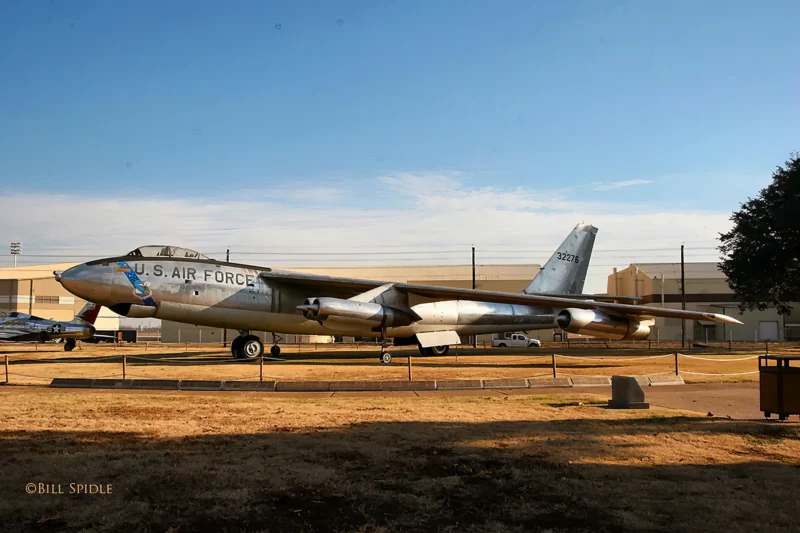
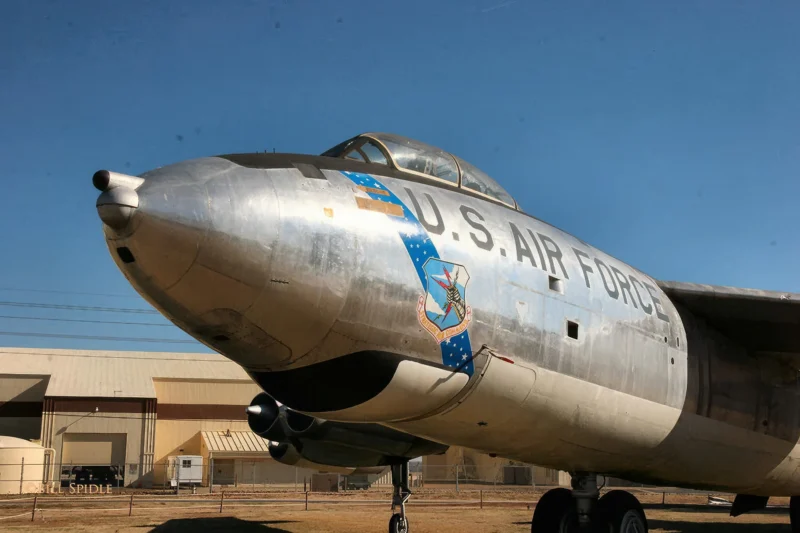
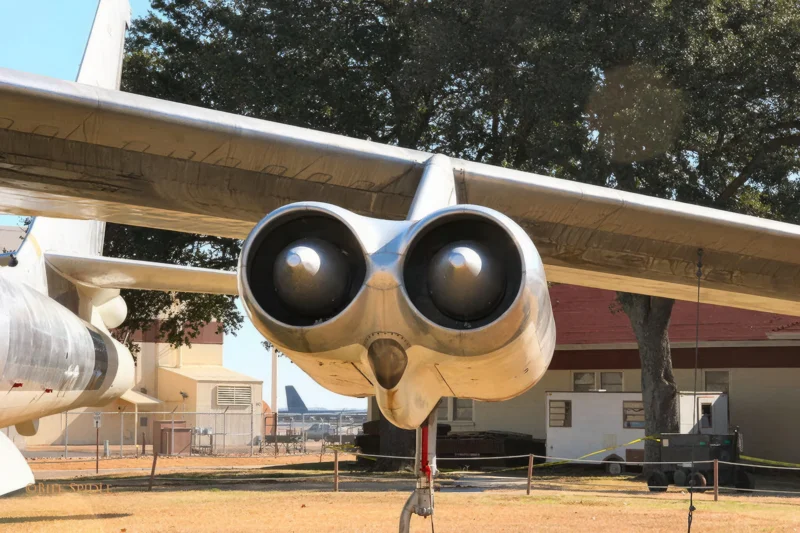
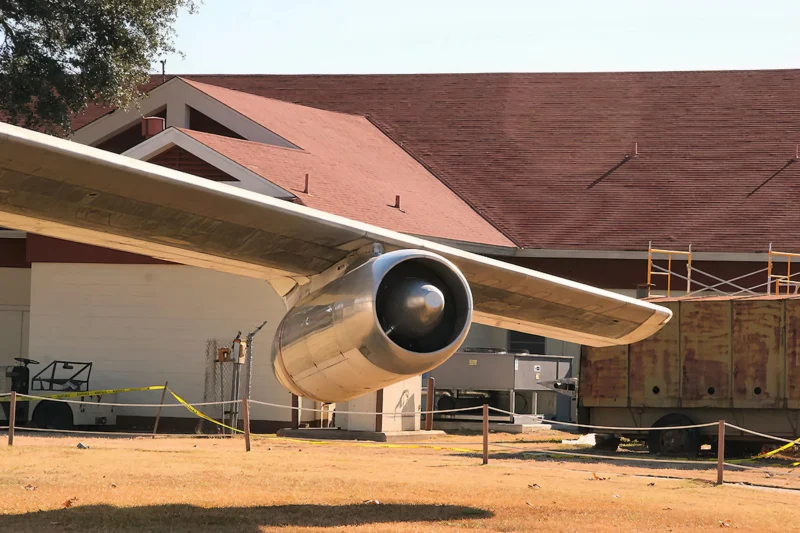
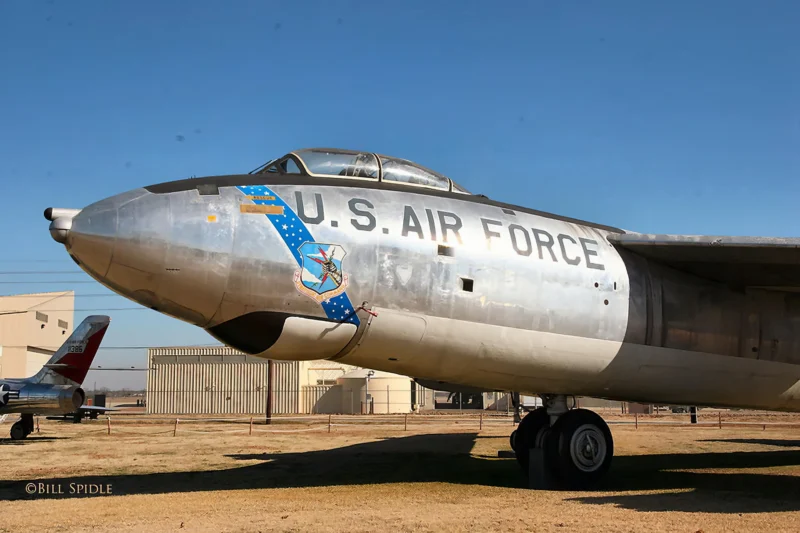
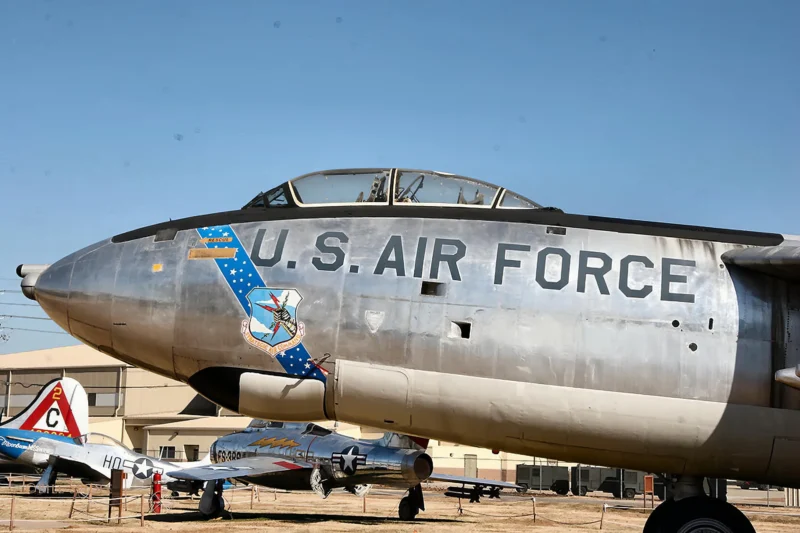
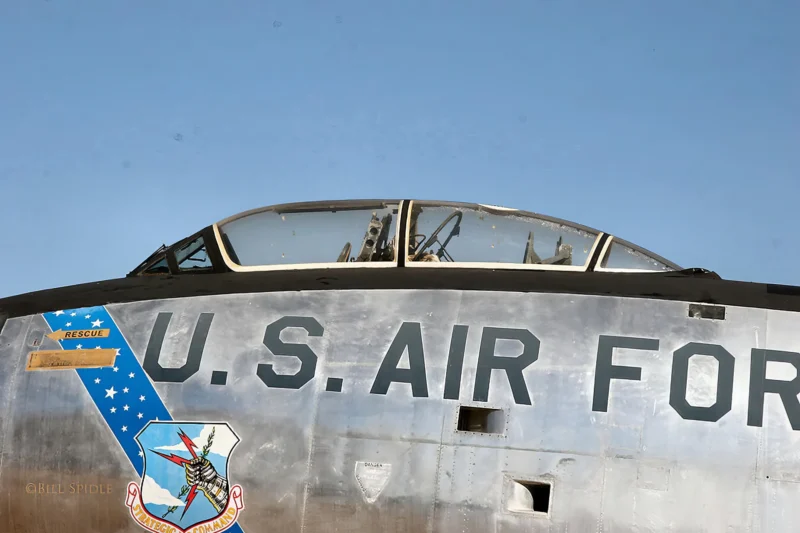


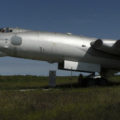
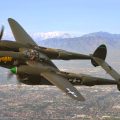
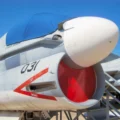
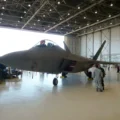
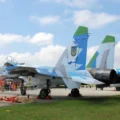
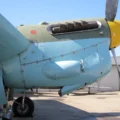


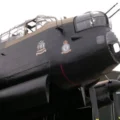
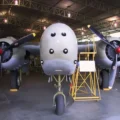
De luchtmacht gebruikte de B47 als weerplatform in de jaren 1960/1970. Aan de westkust opereerden ze vanuit McClellen AFB.